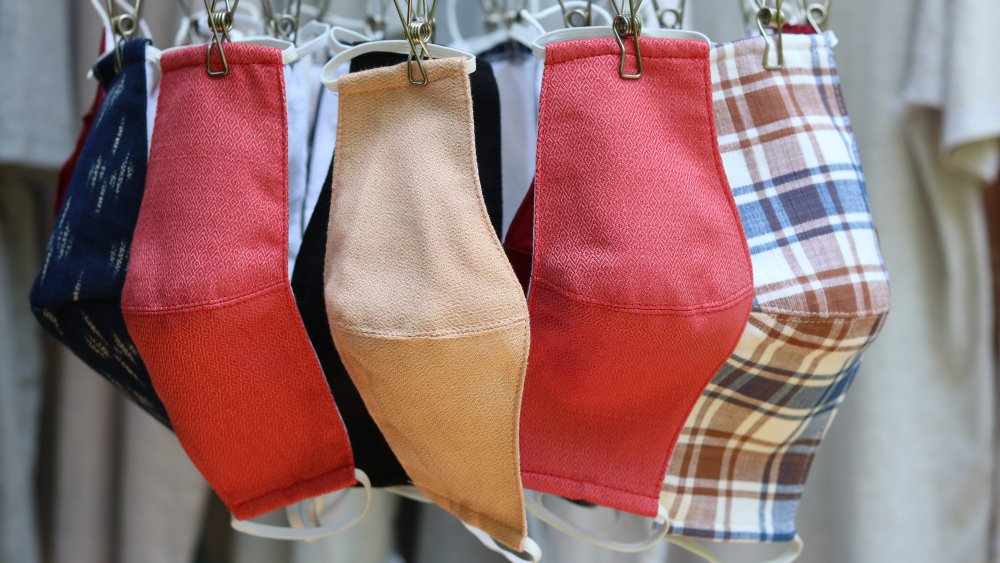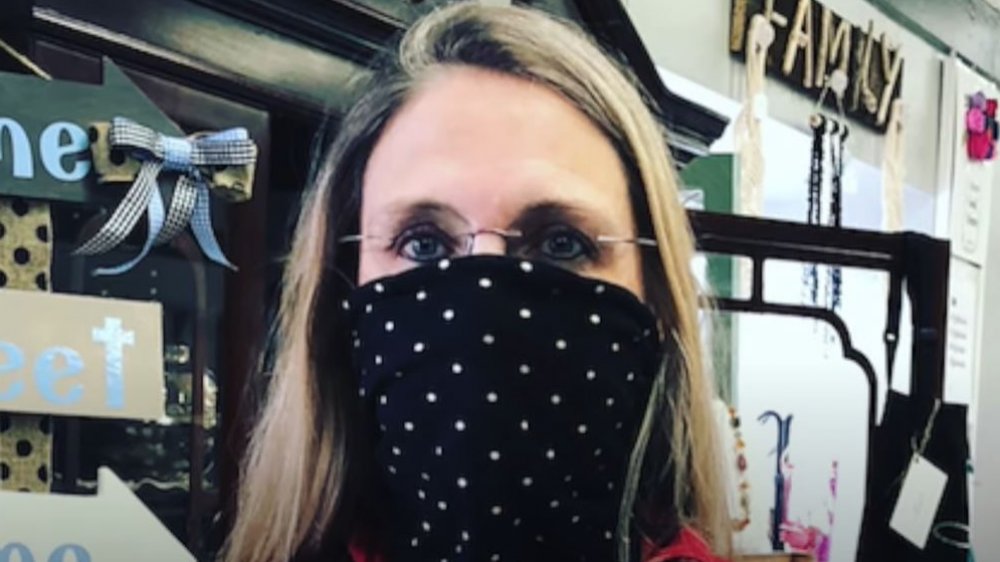This Is The Least Effective Type Of Face Mask, According To Science
There are a lot of face masks out there, but they aren't all created equal. A shortage of personal protective equipment (PPE) means that most of us who don't work in the health field are using non-medical face masks, and it can be hard sorting out the good ones from the bad ones.
Thankfully, a study from Duke University that was recently published in Science Advances has ranked commonly available types of masks after testing them to see how effective they are in preventing the spread of respiratory droplets while the wearer is speaking. "We use a black box, a laser, and a camera," one of the study's authors, Martin Fischer, told CNN. "The laser beam is expanded vertically to form a thin sheet of light, which we shine through slits on the left and right of the box."
In the study, the wearer of the mask spoke into a hole in front of the box, while a cell phone camera recorded the light scattered by droplets cutting through the laser beam.
This type of face mask isn't very effective
Using this method, the researchers found that the most effective masks are N95 masks and three-layer surgical masks — no surprise there. The study found that the worst face masks are neck fleeces — also called gaiter masks. These masks, which are often worn by runners, were actually found to be less effective than not wearing a mask at all as the material managed to break down larger respiratory droplets into small particles that were then easily carried away.
"We were extremely surprised to find that the number of particles measured with the fleece actually exceeded the number of particles measured without wearing any mask," said Fischer. "We want to emphasize that we really encourage people to wear masks, but we want them to wear masks that actually work."
Knitted masks and folded bandannas used as masks were also found to offer little protection. So what kind of mask should you be using? The study found that cotton masks, including the kind that people have been making themselves at home, work quite well. "This is a very powerful visual tool to raise awareness that very simple masks, like these homemade cotton masks, do really well to stop the majority of these respiratory droplets," said Fischer.

